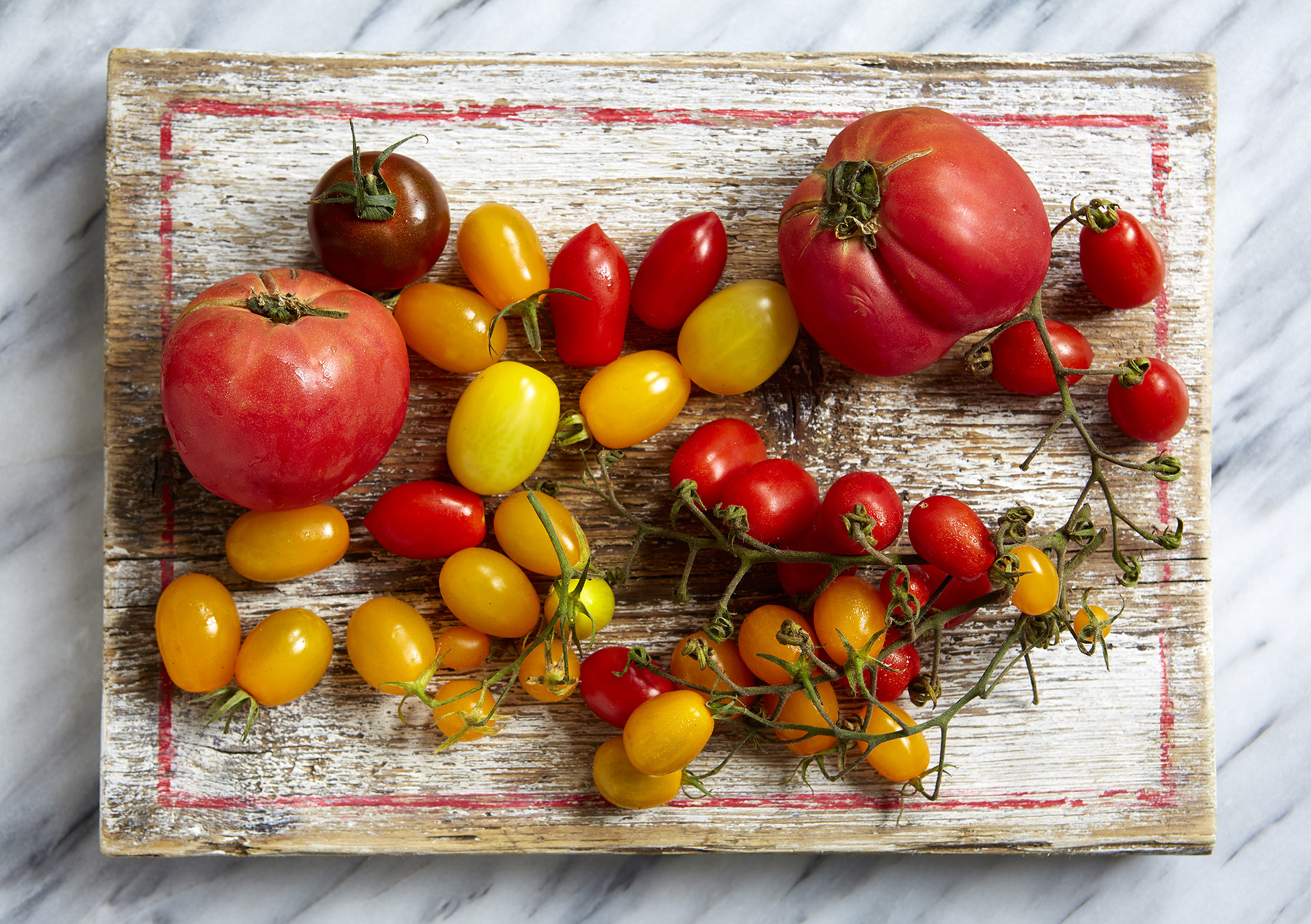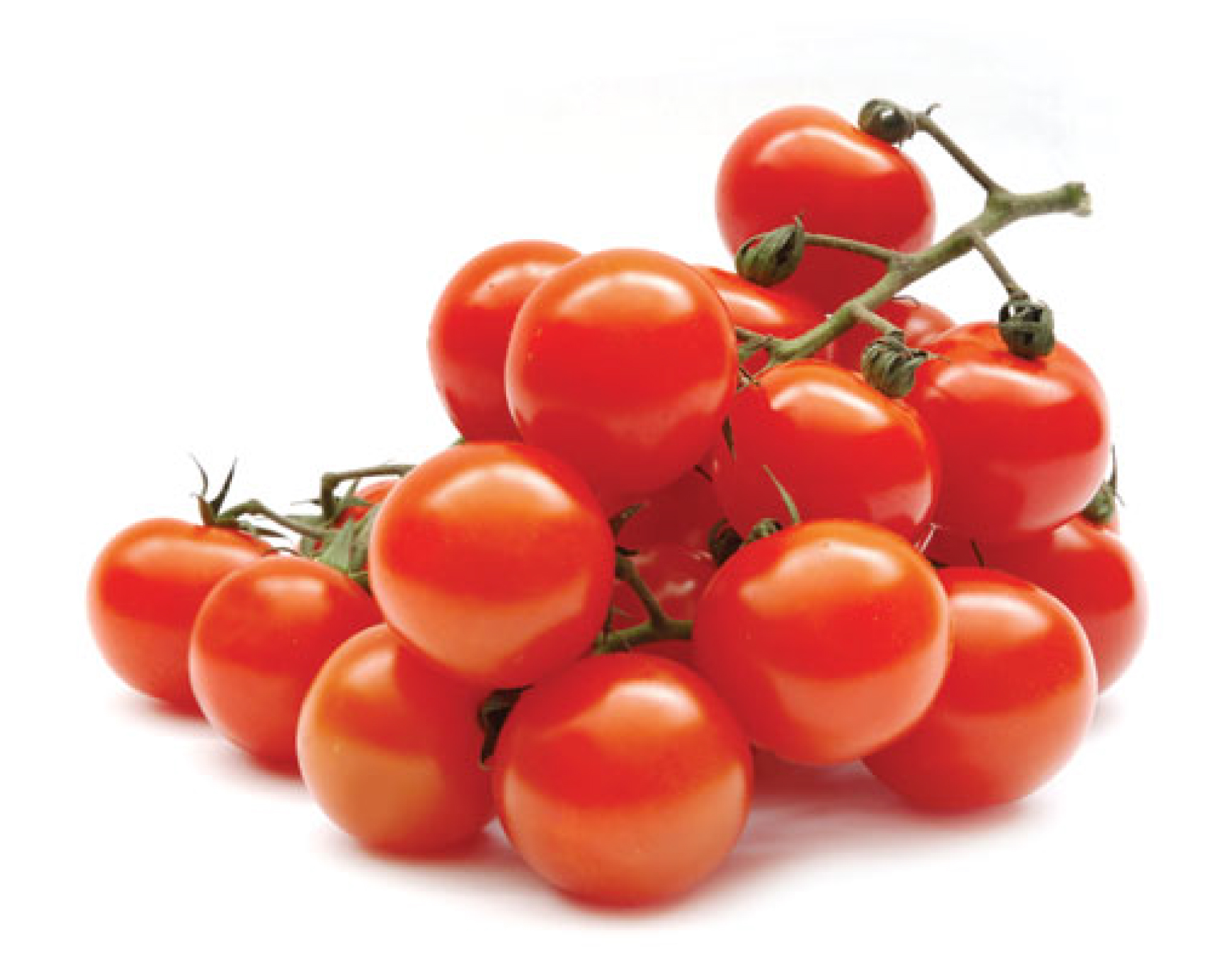Tom Parker-Bowles' guide to tomatoes — and the recipe that 'is probably the most useful item in any store cupboard'
When it comes to tomatoes, Tom Parker-Bowles only has one rule: keep them the hell away from the fridge.


There are few scents as lusciously evocative as the tomato plant in full bloom. So thickly, exotically vegetal you could cut it with a scythe, one whiff is all it takes for me to be whisked back to my grandparents’ greenhouse and carefree, sun-baked East Sussex days spent in the pursuit of nothing much at all. Those tomatoes were sublime, possessed of a sweet intensity that makes my mouth water, nearly 40 years on. The memory may be heavily seasoned with nostalgia, but I don’t think I’ve ever tasted better.
My obsession with the fruit is all encompassing. There’s no ingredient I love more, not even chillies. Growing up, there was always a bowl of tomatoes in the kitchen. My father ate them like apples, in two or three bites with a pinch of salt. He still does, as do my sister and I. He used to grow them himself and taught me the basics, about pinching out errant side shoots and the value of a good feed. But he no longer bothers. Why? Because, he says, the quality of supermarket tomatoes makes it not worth the hassle. I reckon it’s because they attract whitefly to his more prized specimens.
"When it comes to tomatoes, there’s only one rule — keep them the hell away from the fridge"
He does have a point about the supermarket, however. Especially when it comes to cherry varieties. They actually pucker the taste buds, in the best sort of way, deep in the depths of winter. There is something to be said, I suppose, for the importing of fruits born under sunnier skies than our own — although not during our own glorious tomato season, which runs from now until late autumn.
The website of the British Tomato Growers’ Association (www.britishtomatoes.co.uk) has details of most growers. I particularly like Isle of Wight-based www.thetomatostall.co.uk, able to deliver across the country.

Unfortunately, bland abominations do still abound, grown year-round in vast Dutch poly-tunnels, picked unripe, so they travel well and look pretty under the icy glare of the supermarket strip lights. Bland as the billiard balls they resemble, these mountebanks are little more than sad ciphers, empty shadows of the real thing. With their joyless texture and lack of flavour, they are, in fact, anti-tomatoes — a wretched affront to a noble fruit.
“Is any fruit more widely used or so blessedly versatile?”
Not that tomatoes have always been revered. Far from it. When they first arrived from the New World, brought by those all-conquering Spaniards in the late 16th century, they were seen as an aphrodisiac at best. At worst, the devil’s spawn, toxic invaders closely related to deadly nightshade. Potatoes and aubergines, fellow members of the Solanaceae family, suffered a similar fate. Even John Gerard, that great herbalist, decried the tomato as having a ‘ranke and stinking savour’. It was only near the end of the 17th century that its edible charm was discovered. Brave was he that first ate a tomato and all that. Culinary domination followed swiftly after. By the middle of the next century, there were more than 1,000 varieties being grown across Spain and Italy. Once bitten, forever enamoured.
You can see why. Is any fruit more widely used or so blessedly versatile? They are utterly essential. ‘A world devoid of tomato soup, tomato ketchup and tomato paste is hard to visualise,’ wrote Elizabeth David. Amen to that. Wedged between thick, alabaster slices of gently lactic mozzarella. Cooked slowly into rich sauces, slathered over pasta and pizza dough. Thrown into spicy zuppe di cozze.
Exquisite houses, the beauty of Nature, and how to get the most from your life, straight to your inbox.
If olive oil is the lifeblood of southern-Italian cooking, then tomatoes are its soul. Chopped into Mexican salsas zinging with lime and fierce with chilli. The base of South Indian rasams, an essential component of West African jollof, Middle Eastern fattoush, Turkish ezme, Catalan pa amb tomaquet, Niçoise pan bagnat, Tuscan panzanella and Manhattan (not New England) clam chowder. Stuffed, simmered, grilled, baked or braised. Or simply sliced thinly, sprinkled with a little salt and eaten in cheap white bread. When it comes to tomatoes, there’s only one rule — keep them the hell away from the fridge.
You may think me impatient, banging on about a fruit that hasn’t yet reached its peak. Yet that hot April means some of my plants could be fruiting by now. I have a dozen or so in the greenhouse, classics such as Capri, Moneymaker and Marmande, plus showier specimens, striped Tigerella and ribbed, endearingly misshapen Costoluto Fiorentina. For the true obsessive, check out www.seedsofitaly.co.uk for the brilliant Franchi range.
As to books, you need only one. Lindsey Bareham’s The Big Red Book of Tomatoes. It is the alpha and omega of tomato tomes.
This recipe comes from Elizabeth Luard’s new book, Preserving, Potting and Pickling (Grub Street). She’s as elegant in prose as she is reliable in her recipes. Make sure the tomatoes are sweet and ripe.
How to make Tom Parker-Bowles' conserved tomatoes
This is probably the most useful item in any store cupboard, invaluable for thickening and flavouring stews and soups and as the basis for sauces. It will keep for a good six months.
Ingredients
Fills one 1¾ pint/1 litre sterilised kilner jar
- 4lb/2kg tomatoes
- 2 bay leaves
- 4 peeled cloves garlic
- 1tbspn salt
- 8oz/250g fresh shallots
- 2tbspn sugar
- 1 sprig thyme
- 1tspn crushed white peppercorns
Method
Scald and slip the tomatoes out of their skins.
Skin the shallots and halve them if they are large.
Pack all the ingredients into the sterilised kilner jar (leave 1in/2½cm of empty space at the top).
Seal and sterilise the jar, submerged into simmering water at 85˚C, for 30 minutes.
How to use them
Use a ladleful as a topping for pizza (drain excess liquid first). Finish with grated cheese, anchovies and olives, then bake.
Use as a sauce for pasta. Either process the tomatoes with a little olive oil or add a soffritto made from an onion, a carrot and a celery stick, all chopped, plus a few chopped herbs (parsley, rosemary, sage) and minced meat, gently fried in olive oil. Stir in the tomatoes last and bubble up.
Tom Parker Bowles is food writer, critic and regular contributor to Country Life.
